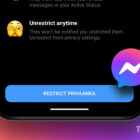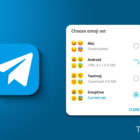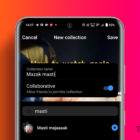How-To: Record With USB Audio
 The sound card on your desktop computer has 1/8th-inch ports on the rear to accept other types of audio input (blue for line in, pink for mic in). If you have a custom-build computer you may have these ports also routed to the front as well.
The sound card on your desktop computer has 1/8th-inch ports on the rear to accept other types of audio input (blue for line in, pink for mic in). If you have a custom-build computer you may have these ports also routed to the front as well.
If you record audio at all with these ports, be it via a microphone built-in to a headset or having a mixing board fed a signal thru line in, you’re going to get what’s called white noise. This is a hissing sound that occurs due to fact you’re using an analog means of feeding audio to the sound card. There is no way to avoid it and you are forced to process your sound afterwards thru a digital filter for noise reduction. In other words, it never sounds good unprocessed.
My recommendation for anyone that records audio is to completely ditch using analog ports. They’re really old and sound really crappy.
If you record audio via USB instead you will be amazed at how much better everything sounds when recorded.
 Method 1: Use a USB headset with mic attached
Method 1: Use a USB headset with mic attached
I use the Logitech Clearchat Comfort USB and people who listen to me speak over this microphone are astounded at how good it sounds. There are no tricks to using this. The difference is digital and that’s why it’s so clear.
If you game at all, having a USB-based headset with mic is a must-have especially if you use it for in-game voice chat. Not only will the audio sound clearer but your spoken voice will also be understood better.
 Method 2: Use a standalone USB-based microphone
Method 2: Use a standalone USB-based microphone
I’ve mentioned this product before but it bears repeating – the Blue Snowball is one of the best USB microphones ever made. It will record anything and I mean anything. Great for voice, great for instruments and also great as an “ambient” mic. It has a sensitivity high enough where you could place it clear across the other side of the room, speak softly from far away and it would still “hear” you. I have nothing but good things to say about this mic.
 Method 3: USB mixer
Method 3: USB mixer
USB mixers are nothing new to people who record audio, but it’s still true that most people aren’t aware they exist. The mixer shown here is an Alesis Multimix 8 USB. If you do any semi-pro (or even pro) recording at all this is a really handy mixer to have. It will accept XLR microphone input, 1/4th-inch input and feed out thru USB. If you’ve got stuff to record but can’t go digital with them, you should take a look at this.
To note: These mixers are almost never in computer retailer shops but rather music shops like Guitar Center and Sam Ash. If you need to see one “in the flesh” you’ll need to go there.
Additional note: If you’ve got the cash, yes there are mixers with more than 8 channels, rack mount flaps and those with FireWire connectivity. But bear in mind if you’re just recording yourself, the Multimix 8 will do the job just fine.
The great debate: Software or Hardware based mixing board?
Something that has been a subject of debate since the advent of software based mixers is whether or not you need a standalone hardware based mixer at all.
My response to this is if you record, yes you do. My reason for stating this is that it is far easier to control and manage your sound using tactile knobs and sliders instead of scrolling sliders on-screen. Professional studios has proven this to be true because they have never given up their standalone mixing boards. The only difference now is that the boards can be digitally controlled – but they haven’t been replaced.
Fear not adding in audio hardware when you need to. :-) “Virtual” mixing boards, while nice, can be annoying.




 Method 1: Use a USB headset with mic attached
Method 1: Use a USB headset with mic attached Method 2: Use a standalone USB-based microphone
Method 2: Use a standalone USB-based microphone  Method 3: USB mixer
Method 3: USB mixer












2 thoughts on “How-To: Record With USB Audio”